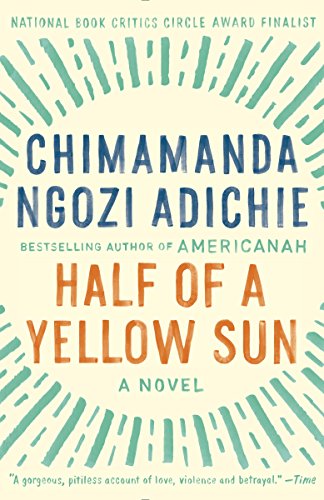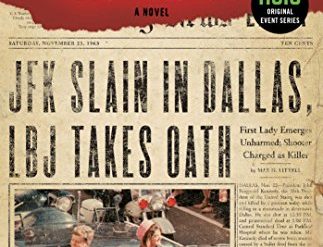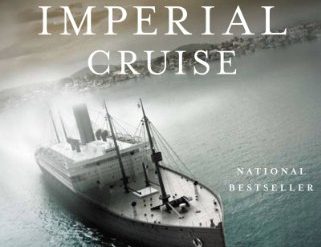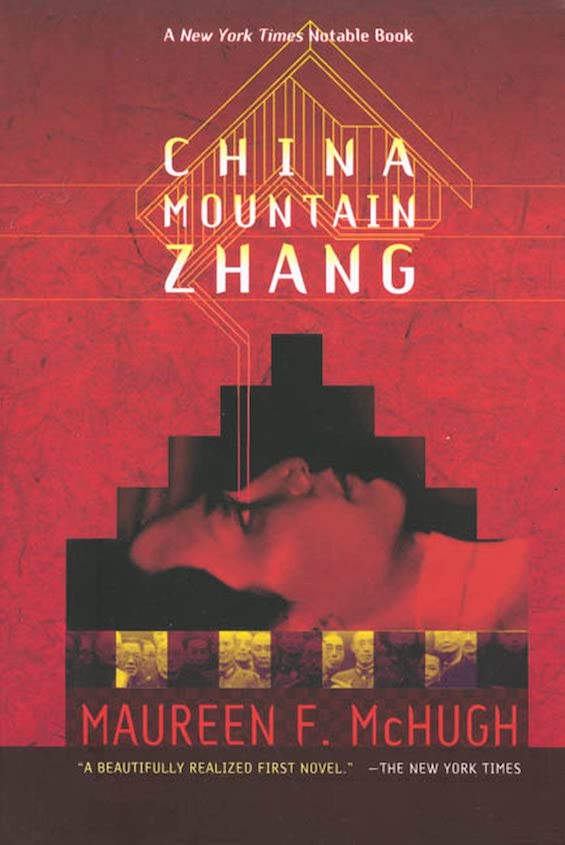
Here you’ll find my lists of the top 10 historical novels as well as the top 10 mysteries & thrillers and top 10 science fiction novels of the decade from 2010 to 2019. I’ve reviewed them all here. The books are listed alphabetically by the authors’ last names within each category, and each title is linked to my review.
Estimated reading time: 16 minutes
Over the course of the past decade, I’ve read, or at least tried to read, considerably more than 1,000 novels. Nearly all of them were published in the last 10 years. I’ve reviewed almost 900 after having read them cover to cover. This selection, then, required making a lot of difficult, even arbitrary decisions. I’m confident, though, that if you’re a fan in any one of these categories, you’ll find all ten books to be rewarding.
This post was updated on September 10, 2023.
Top 10 historical novels

Half of a Yellow Sun by Chimamanda Ngozi Adichie (2008) 562 pages ★★★★★ – Love, loss, and war in post-independence Africa
Through the gripping story of twin sisters, Half of a Yellow Sun recounts the events of the 1960s that culminated in the lopsided Biafran war of independence (1967-70) that pitted the ill-equipped people of southeastern Nigeria against the massive forces of their national government, actively backed by the British. Read the review.
People of the Book by Geraldine Brooks (2008) 396 pages ★★★★★ – The strange story of the Sarajevo Hagadah
Pulitzer-Prize-winning author Geraldine Brooks will carry you on the eloquence of her prose through the five-century journey throughout Southern Europe of the fabled Sarajevo Hagadah. This ceremonial book, available in innumerable versions, is put to work every year in Jewish Seders throughout the world to celebrate Passover. Read the review.
All the Light We Cannot See by Anthony Doerr (2014) 545 pages ★★★★★ – This novel richly deserves the Pulitzer Prize it won
In a wildly original boy-meets-girl story, two teenagers are caught up in the frenzy and the mortal dangers of World War II: a German boy who is extraordinarily clever with all things electronic, and a blind French girl who reads Jules Verne. Read the review.
Sea of Poppies (Ibis Trilogy #1) by Amitav Ghosh (2008) 559 pages ★★★★★ – A superb historical novel about the opium trade by Amitav Ghosh
Amitav Ghosh reaffirms his place as one of contemporary India’s greatest writers with this extraordinarily rich tale of class conflict, exploitation, and forbidden love against the background of the opium trade. The story is set in 1838, shortly before the First Opium War in China which set the stage for mounting conflict in India, as the opium trade declined. Ghosh’s unforgettable characters quickly take on lives of their own, thinking and speaking in their own, often uniquely personal variations on the languages and dialects of the era. Read the review.
Homegoing by Yaa Gyasi (2016) 313 pages ★★★★★ – African Roots through African eyes
This extraordinary debut novel traces the story of a Ghanaian family over more than two centuries through the lives of two branches of its descendants, one in Ghana, the other in the United States. The tale parallels the story told in Alex Haley’s Roots over roughly the same period. Read the review.
The Orphan Master’s Son by Adam Johnson (2012) 459 pages ★★★★☆ – An unsparing tale of life in the living hell of North Korea
Johnson’s themes are the loss of identity in a setting where every aspect of life is controlled from above; the disparity between truth and propaganda; and the struggle between love and loyalty. This novel won the 2013 Pulitzer Prize for Fiction. Read the review.
The Lacuna by Barbara Kingsolver (2009) 681 pages ★★★★★ – Leon Trotsky, Diego Rivera, and the Red Scare
The protagonist of The Lacuna is Harrison Shepherd, a writer of best-selling historical romance novels set in the empires of the Aztecs and the Maya. Born shortly after World War I, son of a minor American federal official and a desperate Mexican woman who sees him as a mealticket, Shepherd crosses borders to become a first-hand witness to the Bonus Army march and encampment in Washington under Herbert Hoover, the rise to fame of Diego Rivera and Frida Kahlo, the assassination of Leon Trotsky, and the slow, painful unfolding of the Red Scare that seized hold of the United States in the early years of the Cold War. Read the review.
The Last Watchman of Old Cairo by Michael David Lukas (2018) 267 pages ★★★★☆ – In Cairo, a perfect Torah scroll, without flaw or innovation
Lukas nimbly shifts the scene in Cairo from the 11th-century to the final years of the 19th, and then to the 21st in Cairo and Berkeley. The narrative strand that connects these three scenes is the family of al-Raqb, which the author translates as “the watcher.” The founder of this nearly 1,000-year dynasty is Ali, a Muslim boy who is 13 years old when the story commences. Over time, Ali gains the name after becoming the night watchman at the ancient ibn Ezra Synagogue in Cairo. More than 800 years later, his descendent, Muhammad al-Raqb, holds down the same job. In turn, Muhammad’s grandson or great-grandson, Ahmed, guards the ruins of the ancient synagogue as the 21st century approaches. And his son, Yusuf, or Joseph al-Raqb, is a graduate student at the University of California, Berkeley, who returns to Cairo to learn about the father he knows only barely. Read the review.
The Good Lord Bird by James McBride (2013) 434 pages ★★★★★ – American history, laughing all the way
Scoot yourself over, Huckleberry Finn! Make room! Here comes Henry Shackleford, aka Henrietta, aka Little Onion, with a tall tale ripped and twisted out of the pages of history that’s like to set your britches afire. Yes, here’s The Good Lord Bird, courtesy of James McBride, a rollicking, tummy-tickling, topsy-turvy account of John Brown’s raid on Harper’s Ferry—the stupidly quixotic act that helped light the fuse of the Civil War. Read the review.
The Sympathizer by Viet Thanh Nguyen (2015) 351 pages ★★★★★ – The Vietnam War through Vietnamese eyes
The narrator is a South Vietnamese army officer who introduces himself as “a spy, a sleeper, a spook, a man of two faces.” He is a secret agent of the NLF actually living in the home of the General who commands the South Vietnamese security police. This remarkable debut novel won the 2016 Pulitzer Prize for Fiction. Read the review.
For a much longer list of historical novels I’ve read and enjoyed, see 20 most enlightening historical novels (plus dozens of runners-up).
Top 10 mysteries & thrillers
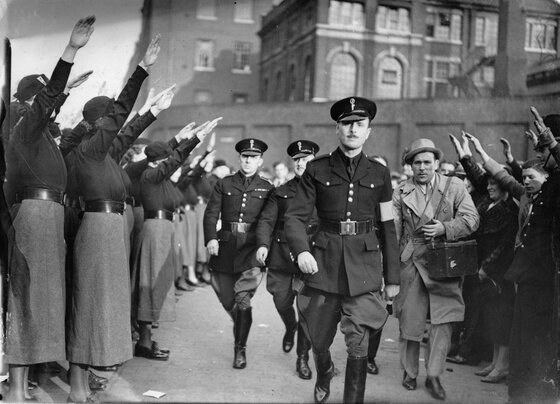
Transcription by Kate Atkinson (2018) 331 pages ★★★★★ – Kate Atkinson’s latest is a beautifully written spy story
We meet Juliet Armstrong in 1981 as she nears 60 years of age. But the formative events in the plot occur three and four decades earlier, when Juliet had been recruited as a typist by MI5. Ten years later, we find her working as a children’s radio producer for the BBC, when her wartime work comes back to haunt her. However, we don’t learn the full story until nearly the end of the book. It you read it, prepare for a shock. Read the review.
The Trinity Six by Charles Cumming (2011) 421 pages ★★★★★ – A stellar new spy story by Charles Cumming
The notorious Cambridge Five were seduced by the lure of Communism as undergraduates during the 1930s and spied for the Soviet Union. Their defection following World War II caused the greatest espionage scandal in modern history. This is an ingenious story about a sixth man and his longer and even more consequential career. Read the review.
Gone Girl by Gillian Flynn (2012) 434 pages ★★★★★ – A bestselling New York Times thriller that’s worth all the fuss
This is the story of the perfect couple in the ideal marriage. It’s a storybook tale . . . or maybe it isn’t. One day she goes missing, and it slowly begins to dawn on you that one (or both) of the two is a sociopath. Read the review.
The Lost Man by Jane Harper (2019) 345 pages ★★★★★ – A superb murder mystery set in the Australian outback
Imagine a whodunit without a detective, or an investigator of any sort, for that matter. Take a family of three brothers, their mother, one wife, two young children, and a long-time hired hand. Now, one of the brothers has died. Did he commit suicide? Or was it murder? And if it was, who did it? Was it someone in the family . . . or a woman out of the murdered man’s past? Yes, this is a mystery as puzzling as you’ll find in any detective novel. And Jane Harper tells the tale beautifully. The Lost Man is a truly outstanding murder mystery. Read the review.
An Officer and a Spy by Robert Harris (2014) 449 pages ★★★★★ – The Dreyfus Affair, reenacted in a suspenseful spy novel
The Dreyfus Affair is typically viewed as a sign of the vicious Anti-Semitism that ran rampant in France, as in much of Europe at the turn of the century. More broadly, the case is seen as a universal symbol of injustice. In Harris’ treatment, other factors emerge to flesh out the story: the rigid, insular culture of the French Army following its defeat at the hands of the Germans in 1871, Dreyfus’ own problematic personality, and the courage of Georges Picquart, the French officer who dug out the truth and defied his superiors to bring it to light in open court. Read the review.
The Increment by David Ignatius (2009) 401 pages ★★★★★ – A gripping novel about Iran and the CIA
Washington Post columnist and editor David Ignatius has covered wars, diplomacy, and the intelligence community in a long journalistic career. His reporting infuses the ten suspense and espionage novels he has written over the past thirty years. The Increment, published in 2009, dramatizes the hysteria in the Bush Administration about Iran’s program to build nuclear weapons. This well-informed and gripping novel preceded by several years Barack Obama’s successful initiative to contain the program by treaty. Read the review.
The Widows of Malabar Hill (Perveen Mistry #1) by Sujata Massey 2018) 401 pages ★★★★★ – The first woman lawyer in Bombay solves a baffling mystery
Perveen is six months into her work as a solicitor in her father’s firm, Mistry Law. Because her father is busy elsewhere, she follows up on a puzzling case involving three widows who live in purdah. Their husband had died recently, and it looked as though the young man he had appointed to run the household was trying to cheat the widows out of their inheritance. With great difficulty, Perveen gains entry to the section of the house on Malabar Hill where the widows live. But soon her investigation runs afoul of the head of the household. And then murder enters the scene. Read the review.
Red Sparrow (Red Sparrow Trilogy #1) by Jason Matthews (2013) 577 pages ★★★★★ – Authentic espionage tradecraft in this gripping novel by a CIA veteran
Red Sparrow is not a conventional spy story. True enough, it’s well-written, ingeniously plotted, and endlessly suspenseful. On that account alone, fans of John le Carré, Joseph Kanon, or Alan Furst should appreciate it. But the book rises above the level of the genre because the author has infused it with detailed, intimate knowledge of authentic espionage tradecraft employed both by the CIA and by Russia’s Foreign Intelligence Service, the SVR. Read the review.
The Leopard by Jo Nesbo (2011) 626 pages ★★★★★ – Is Jo Nesbo the world’s best crime novelist?
The novel, the eighth in the celebrated series of Harry Hole thrillers, functions well on three levels: a suspenseful story of how Harry and his colleagues pursue a brilliant serial killer; an insightful character study of a man wrestling with more than his share of demons; and a highly perceptive tale of internal politics within the Norwegian police. Read the review.
Pretty Girls by Karin Slaughter (2015) 548 pages ★★★★★ – Three sisters, a marriage, a gruesome crime
The fulcrum of this tale is the long-ago disappearance of nineteen-year-old Julia Carroll, the oldest of three beautiful blonde sisters. The sheriff and police believe she ran away, but no one in the family believes that. Read the review.
For much longer lists of mysteries and thrillers I’ve read and enjoyed, see Top 10 mystery and thriller series and 20 excellent standalone mysteries and thrillers.
Top 10 science fiction novels

American War by Omar El Akkad (2017) 332 pages ★★★★★ – A chilling tale, lucidly told, of a Second American Civil War
Four states in the Deep South have seceded in response to federal legislation banning the use of fossil fuels—and a Southern “homicide bomber” has assassinated the President of the United States in Columbus, the country’s new capital. The Reds and Blues are now at war. Read the review.
Feed by M. T. Anderson (2010) 322 pages ★★★★★ – A terrifying vision of the future in an award-winning young adult novel
Corporations are the dominant force on the planet. Climate change, pollution, and overfishing have killed the oceans. Past wars have left a blanket of radioactive dust all across the surface. People on Earth live underground to avoid the intolerable heat and unbreathable atmosphere. Massive numbers have migrated off-planet to Mars, the moons of Jupiter, and nearby star systems. This is truly a dystopian society. Read the review.
The Windup Girl by Paolo Bacigalupi (2009) 378 pages ★★★★★ – One of the best science fiction novels I’ve ever read
Powerful food-exporting corporations have killed off virtually all traditional sources of food—and hundreds of millions of people—with genetically engineered plagues to increase their leverage in the market. Now they hungrily eye Thailand and its own independent success in creating new fruits and nightshades capable of resisting the ubiquitous plant-killers. Read the review.
Komarr (Vorkosigan Saga #11) by Lois McMaster Bujold (2011) 332 pages ★★★★★ – The best book in the Vorkosigan Saga?
Most of the Vorkosigan novels are space operas that sprawl across the galaxy. The action in Komarr is limited to the single planet of that name and a space station in orbit around it. And most of the books in the series feature a large cast of characters. The focus in Komarr is squarely on Miles Vorkosigan and Ekaterin Vorsoisson. What is distinctive about this novel is how deeply we plunge into the inner lives of both principal characters. Few literary novels provide better examples of character development. Read the review.
Retrograde (Retrograde #1) by Peter Cawdron (2017) 259 pages ★★★★★ – What life on Mars would really be like
If you want to understand what life on Mars would really be like, New Zealander Peter Cawdron‘s excellent novel, Retrograde, is the place to start. Cawdron imagines an international 120-person scientific colony established there half a century or so in the future. The colony consists of four underground modules, one each staffed by NASA, and the Chinese, Russian, and “Eurasian” space agencies. (The Eurasian complement is dominated by Europeans, Indians, and Japanese.) Cawdron paints a credible picture of the technology and of the massive challenges involved in surviving the planet’s inhospitable environment. But he is equally adroit in portraying the person-to-person and cross-border conflicts that develop when things begin spinning out of control in the colony. Read the review.
The Long Way to a Small, Angry Planet (Wayfarers #1) by Becky Chambers (2015) 423 pages ★★★★★ – A delightful modern space opera that’s all about character development
Space opera. The term conjures up visions of intergalactic battles, ugly alien monsters, and heroic human commanders besting all against impossible odds. Back in the 1930s, science fiction was dominated by such sophomoric fare, and the genre has reappeared periodically ever since. Notable latter-day examples include Lois McMaster Bujold’s long-running Vorkosigan Saga and John Scalzi’s Old Man’s War series. Both series have been bestsellers in recent years, and Bujold has won five Hugo Awards for hers. Now a young American author, Becky Chambers, has come onto the scene with the first three novels in a modern space opera series. It’s a delightful departure from all the bad habits exhibited in the genre’s infancy. Read the review.
The Calculating Stars (Lady Astronaut #1) by Mary Robinette Kowal (2018) 432 pages ★★★★★ – This novel shows just how good hard science fiction can be
The Calculating Stars introduces Dr. Elma Wexler York, a mathematical genius with doctorates in physics and math from Stanford University. Elma had gone to high school at age eleven and to Stanford at fourteen. She’s the anxiety-ridden daughter of a Jewish Army general who works as a computer at the National Advisory Committee for Aeronautics, or NACA. (In those days, “computers” were people, not machines, and most of them were women. Using paper, pencil, and adding machines, they wrote the equations for the ballistics calculations used in artillery and, later, in missiles and rockets.) And, yes, you read that right. It’s NACA, not NASA. Because the novel is set in the 1950s in an alternate history of the United States—and the planet. Read the review.
Noumenon (Noumenon #1) by Marina J. Lostetter (2017) 432 pages ★★★★★ – A visionary science fiction novel with hard science at its core
At its best, science fiction stretches the mind to its limits and beyond. Classic works such as Olaf Stapledon’s Starmaker and Isaac Asimov’s Foundation Trilogy roam throughout the universe, spanning millions or even billions of years and offering a glimpse of humanity’s ultimate potential. In more recent years, contemporary sci-fi authors have ventured into the same unknown space with what I term visionary science fiction. They tend to bring a more nuanced view of the distant future. Marina J. Lostetter’s extraordinary novel, Noumenon, is a brilliant example. Read the review.
Station Eleven by Emily St. John Mandel (2014) 352 pages ★★★★★ – Life on Earth after the apocalypse
In the post-apocalyptic world of this wonderful novel, a National Book Award Finalist, there are no functioning cities. Survivors have scattered over the countryside, some of them coming together in communities of at most a couple of hundred people. In the Skymiles Lounge at a small-town airport, someone has set up a Museum of Civilization, displaying mobile phones, electronic games, credit cards, and other artifacts of lives long gone. Read the review.
Autonomous by Annalee Newitz (2017) 298 pages ★★★★★ – In 2144, Arctic resorts, autonomous robots, and killer drugs
The lives of most of the world’s citizens are dominated by a handful of huge pharma corporations which produce expensive patented drugs that lengthen lifespan, enhance productivity, and induce euphoria as well as prevent illness. A flourishing pirate economy reverse-engineers the most popular drugs. To enforce patent law, teams of agents go around the world to capture or kill the practitioners of “black pharma.” Read the review.
For related reading
You’ll find a lot more great sci-fi novels at:
- The ultimate guide to the all-time best science fiction novels
- The top 10 sci-fi novels
- The top 10 dystopian novels
And you can always find my most popular reviews, and the most recent ones, on the Home Page.

